You will often hear people saying that you need a car to explore Hokkaido. We will not argue that you can get to more places, more easily by car, but Exploring Hokkaido by train is still a good way to see and experience the charms of Hokkaido. TSJR recently undertook a Hokkaido Rail Trip travelling from Hakodate in the south to Wakkanai Japan’s most northerly railway station.
This article only covers some of the railways in Hokkaido. We hope to publish more Hokkaido articles in due course.
What is in this post…
Explore Hokkaido by train…Explore Hokkaido’s Railways
We actually arrived in Hokkaido using the Hokkaido Shinkansen, but our aim on this trip was to travel as much as we could on local trains, where we could. However, we have to admit that in order to do our planned course we did have to travel quite a bit by Limited Express train, but as these travel along conventional lines we could still see a lot of Hokkaido’s great scenery.
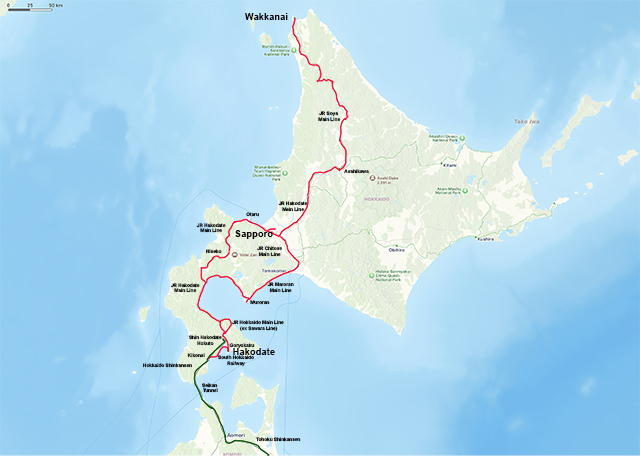
We started our trip proper in Hakodate, where we travelled on the South Hokkaido Railway to Kikonai before returning to Hakodate. We then travelled to Sapporo via Niseko & Otaru, on the “local” line stretch of the JR Hakodate Main Line. We took the 5 hour journey to Wakkanai, in the far north of Hokaido, before return to Hakodate via Sapporo but this time using the Muroran Main Line and the former Sawara Line branch of the Hakodate Main Line. (click on map to enlarge)
For the rail enthusiast, Hokkaido has a lot to offer as well. All of its EMU rolling stock is unique to JR Hokkaido with its harsher winter weather. It is no secret that JR Hokkaido is not in a good financial position and many of its lines have low passenger usage, so it is still operating many JNR era trains, although in recent years they are being replaced by new H100 diesel cars (based on JR East’s GV-E400)
South Hokkaido Railway – View the Tsugaru Straits
Before the Hokkaido Shinkansen opened, by rail you had to take the Limited Express Hakucho or Limited Express Super Hakucho, between Honshu and Hokkaido. Today the only way by rail to get across the Tsugaru Straits which separate Honshu from Hokkaido is by using the Hokkaido Shinkansen. It uses the Seikan tunnel as did the previous limited express trains, but much of the scenic views you could see, you cannot from the shinkansen.
The South Hokkaido Railway, or Donan Isaribi Railway or Isatetsu as it is known locally(道南いさりび鉄道 or “いさ鉄” ) uses part of the former JR Esashi Line between Goryokaku and Kikonai. For much of the way the Isatetsu Line runs close to the coastline and you can see the Hakodate Peninsula. For those who travelled on the non shinkansen route from Aomori to Hakodate it will bring back memories.
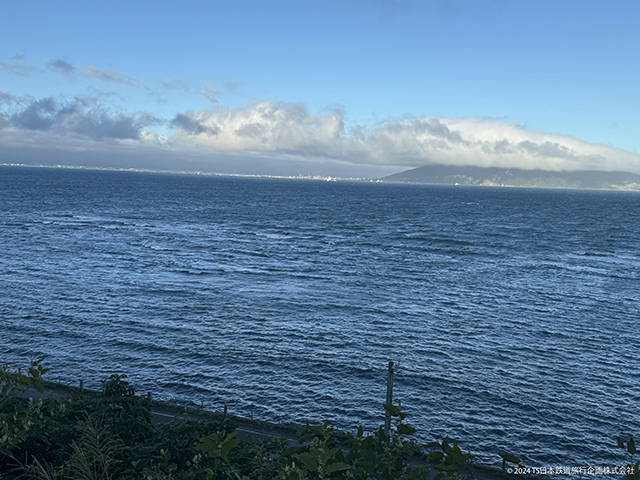
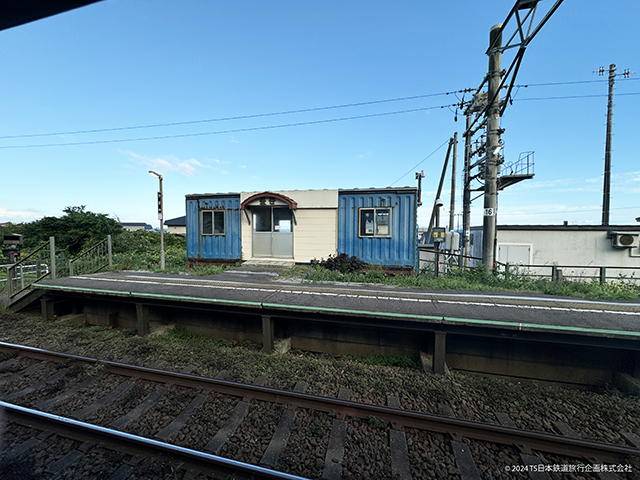
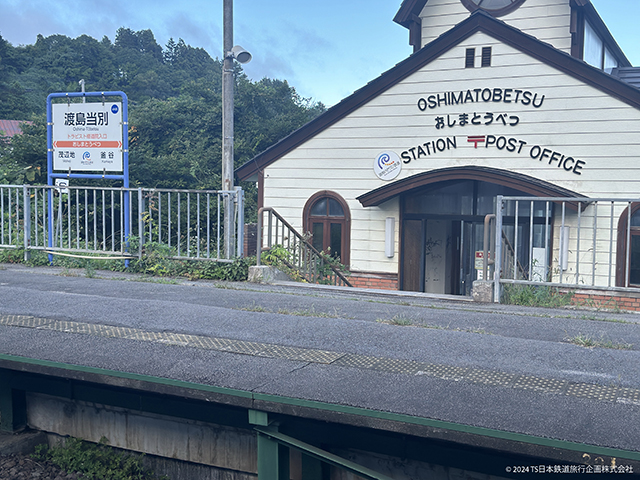
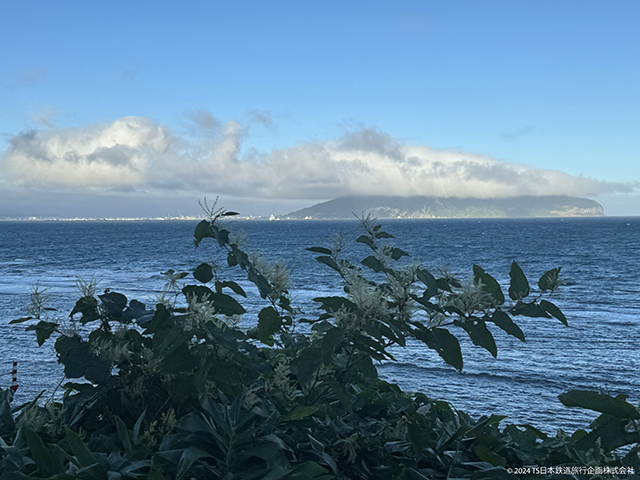
Places to see / visit along the South Hokkaido railway are:
- Trappist Monastery – Oshima Tobetsu
- Yafurai Tenmangu Shrine & Old cars from the Hokutosei Sleeper train – Moheji
- Samegawa Shrine – Kikonai
- Tsugaru Straits and Mt Hakodate
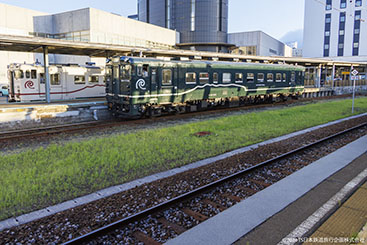
The trains are also old, all being ex JNR / JR Hokkaido KiHa40 diesel railcars. Unfortunately Kikonai station, which is also a stop on the Hokkaido Shinkansen has lost its former status as a junction station when the Kikonai and Esashi part of the Esashi Line closed in 2014. It is however the place where freight services, using JR Freights EH800 25KV/20KV leave and join the Hokkaido Shinkansen route through the Seikan Tunnel.
| Route | Goryokaku~Kikonai |
|---|---|
| length | 37.8km |
| Gauge | 1067mm |
| Electrified | Yes, 20KV AC, for freight; however all passenger services are DMU operated. |
| Rolling stock | ex JR Hokkaido KiHa40 DMU |
| Other Info | Freight traffic hauled by JR Freight dual voltage EH800 locomotives between Goryokaku and Aomori using the shinkansen route between Kikonai and Okutsugaru-Imabetsu which is dual gauged (1067mm & 1432mm). |
Hakodate & Sapporo Trams
Both Hakodate and Sapporo have city tram systems. The Hakodate Tram in particular is a great way to get around the city. The Sapporo Tram goes in a large circular route , which although does not serve some of the top tourist spots it does nevertheless provide a good way to get round central Sapporo including the Odori shopping area, the Mt Moiwa ropeway entrance and the Susukino entertainment area.
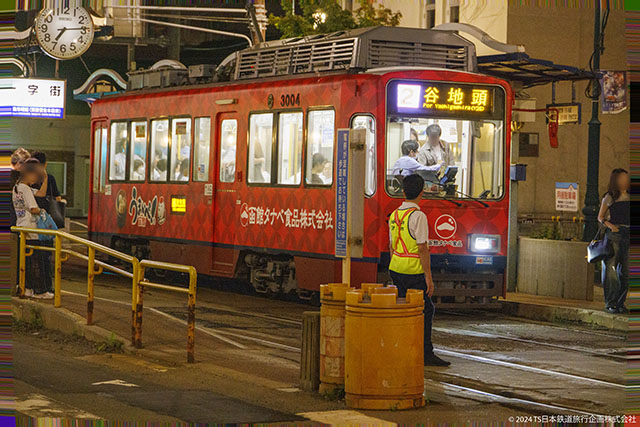
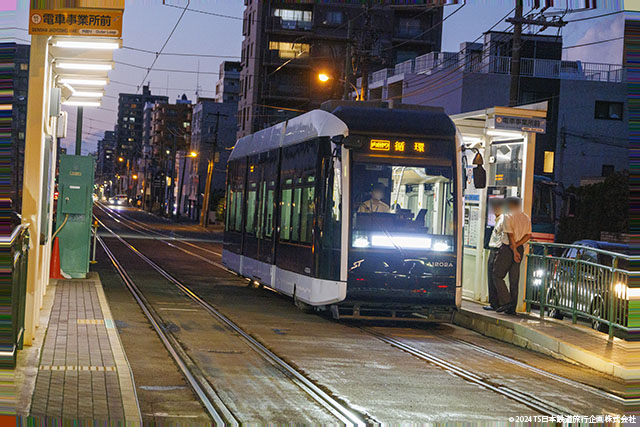
The Hakodate Tram has two routes both of which serve Hakodate Station and have stops near to the Mt Hakodate Ropeway and Kanemori Red Brick Warehouse shopping & restaurant area, the Goryokaku Fort and Yunokawa Onsen area. Route 2 is convenient for the historical buildings & churches area of Motomachi.
| Hakodate City Tram | Sapporo City Tram | |
| No of Lines / routes | 4 lines / 2 routes | 4 lines / 1 circular route |
| Route km | 10.9 | 8.9 |
| no of trams (as at April 2024 | 32 + 2 snow ploughs + 3 decorated cars | 36 + 5 snow ploughs |
| gauge | 1372mm | 1067mm |
For more information:
- Hakodate Tram: Hakodate Station Guide Hakodate Travel Guide
- Sapporo Tram: Sapporo Station Guide Sapporo Tourist Guide
Hakodate to Sapporo – the shortest distance but longest time…
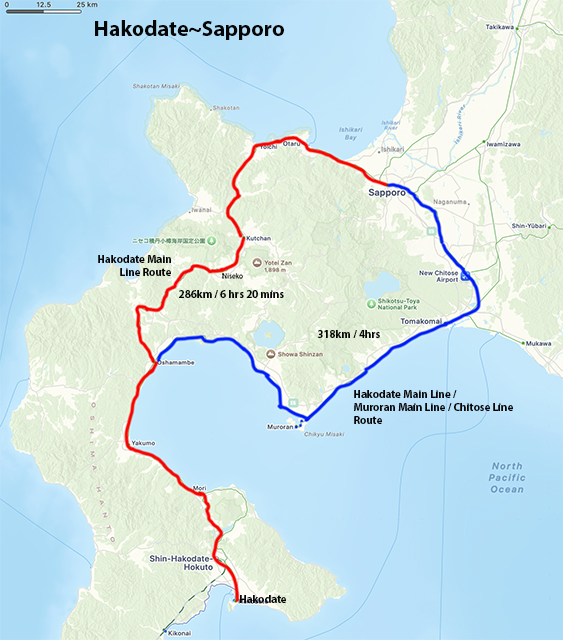
Most people travelling by train between Hakodate and Sapporo will take the Limited Express Hokuto train which does the journey in about 4 hours without the need to change trains. You might not realise though, whilst you are admiring the view of Uchiura Bay is that the train is actually taking the “long way round”
There is a shorter route, which is equally as scenic, although in a different way, which goes via Niseko. Many skiers may have been to or know of Niseko as it is very popular with inbound tourists for that reason.
The route via Niseko takes 6 hours (using the Limited Express to Oshamambe and then local trains via Niseko, Kutchan and Otaru to Sapporoand normally requiring a further change at Kutchan.
The reason for this is actually quite logical, the route via Muroran and Chitose although still very rural, does serve more cities and also gives access to Lake Toya area. The Longer route however is a very scenic route as it travels between the mountains.
On the day that TSJR travelled on the route our train was bought to a sudden stop due to a bear on the line. Fortunately it was not hit and after a short while moved on.
There are only a few trains a day, so travelling this route does need some planning. We also had quite a long wait, and we were also quite surprised at the number of other passengers who were waiting for the same train. There is a soba noodle restaurant close to the station and you can walk to the coast line quite quickly.
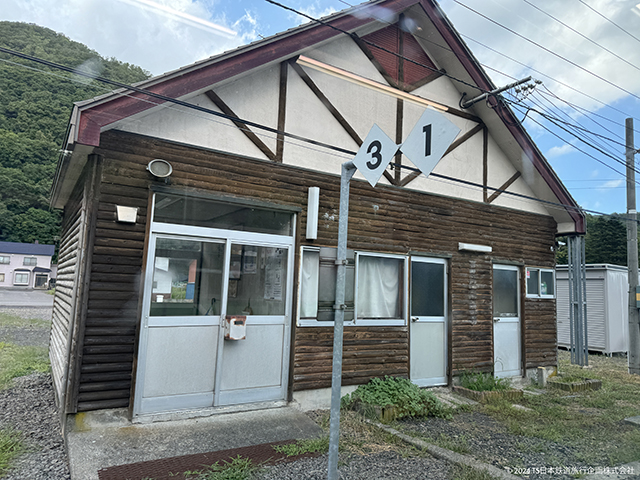
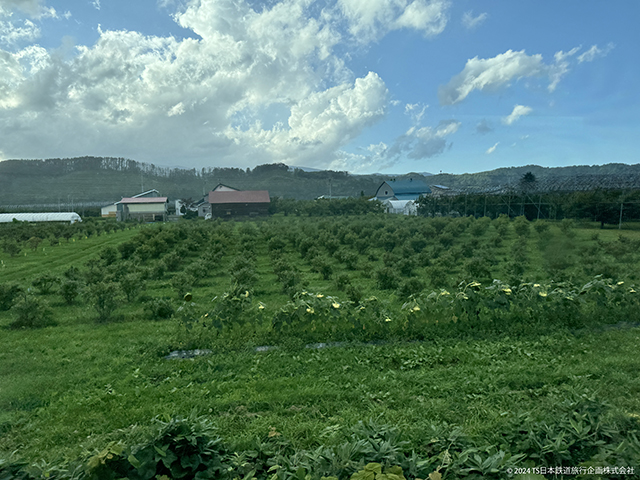
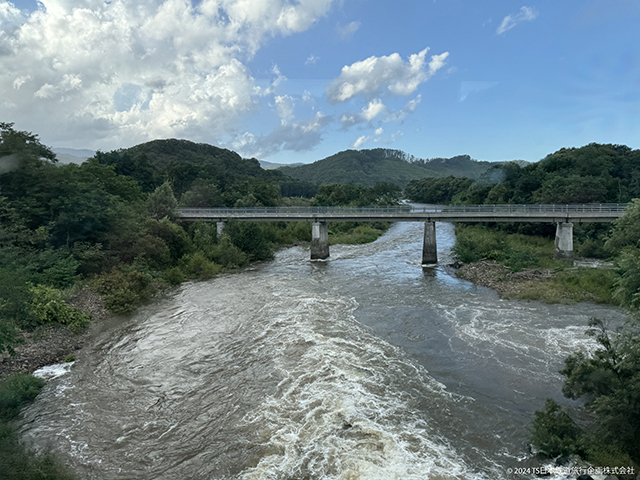
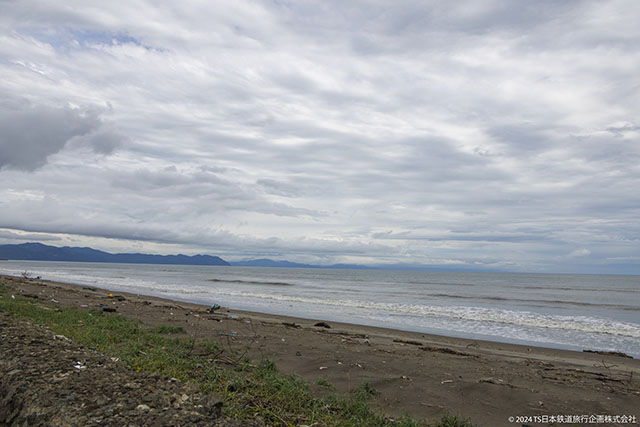
Hakodate~Oshamambe
- Distance: 112.3km
- Time taken: (by Limited Express Hokuto): 1hr 30mins
- Frequency: approx every 1~1 1/2hrs
- Train type: Kiha 261 (Limited Express)
- Electrification: only between Hakodate and Shin Hakodate Hokuto 20KV AC; rest of line to Oshamambe is non electrified.
Oshamambe~Kutchan
- Distance: 81km
- Time taken: by local train 1hr 35~40mins
- Frequency: 4 trains a day in each direction. During winter ski season 1 rapid service in each direction a day)
- Train Type: H100 Diesel rail car; Niseko Liner (winter only) KiHa201
- Electrification: None all trains operated by Diesel DMUs or railcars
Note: due to the infrequency of the Local trains between Oshamambe and Kutchan, there may be a long wait at Oshamambe (up to 100 minutes)
Kutchan~Otaru
- Distance: 59.2km
- Time take: by local train 1hr 10mins~
- Frequency: approx every 60~90mins
- Train Type: Train Type: H100 Diesel rail car; Niseko Liner (winter only) KiHa201
- Electrification: none
Otaru~Sapporo
- Distance: 33.8km
- Time taken: by local train 45~50mins, by rapid services 33~35mins
- Frequency: approx every 20 mins
- Train Type: JR Hokkaido suburban electric EMUs (733, 735, 731, 721 series)
- Electrification: Yes 20KV AC
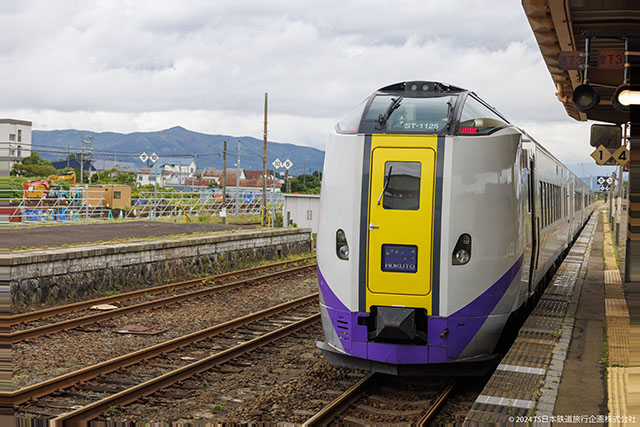
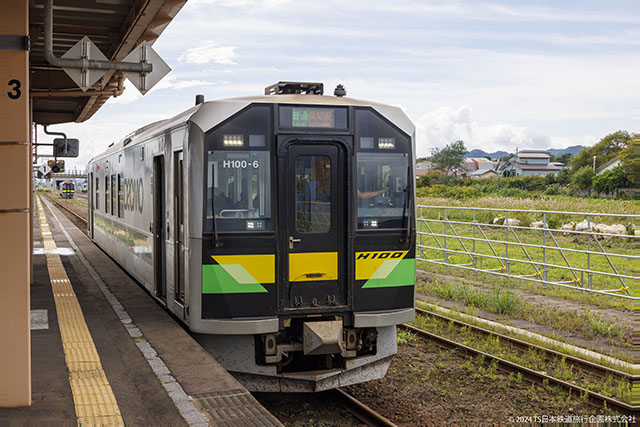
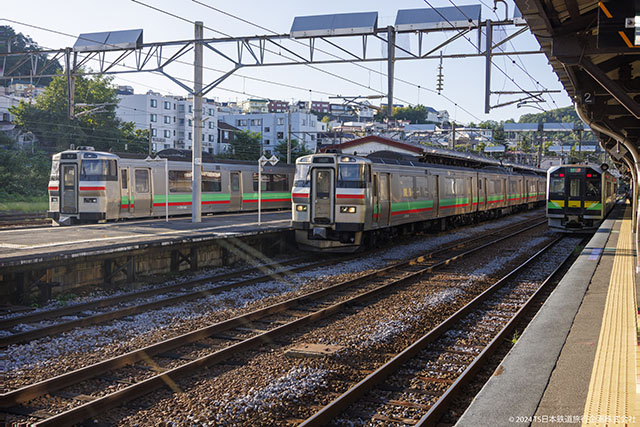

Hokkaido Shinkansen extension to Sapporo
The Hokkaido Shinkansen extension to Sapporo will roughly follow the route of the Hakodate Main Line, which will mean that the most of the Hakodate Main Line described in this section will become what is known as a “Parallel Conventional Line” which provides a legal reason for the withdrawal of services or transfer to a third party operator. At the moment it looks like the section between Oshamambe and Yoichi will be closed and replaced by buses, whilst the sections between Hakodate~Oshamambe and Yoichi~Otaru will convert to third sector railways (i.e. owned and operated by private-public enterprise).
BUT the Hokkaido Shinkansen extension will not open until early 2030s, so plenty of time to still ride this route!
To the most northern station in Japan – Wakkanai – a 5 hour Journey by Limited Express!
This is the longest Limited Express run in Japan, taking just over 5 hours to complete the journey one way between Sapporo and Wakkanai. You can actually do it by local train, but that will take you up to 15 hours, although you will only have to change trains twice. This is a challenge that many rail enthusiast in Japan aspires to achieve 8and many have!) The route is along the Hakodate Main Line to Asahikawa and then the Soya Line from Asahikawa to Wakkanai.
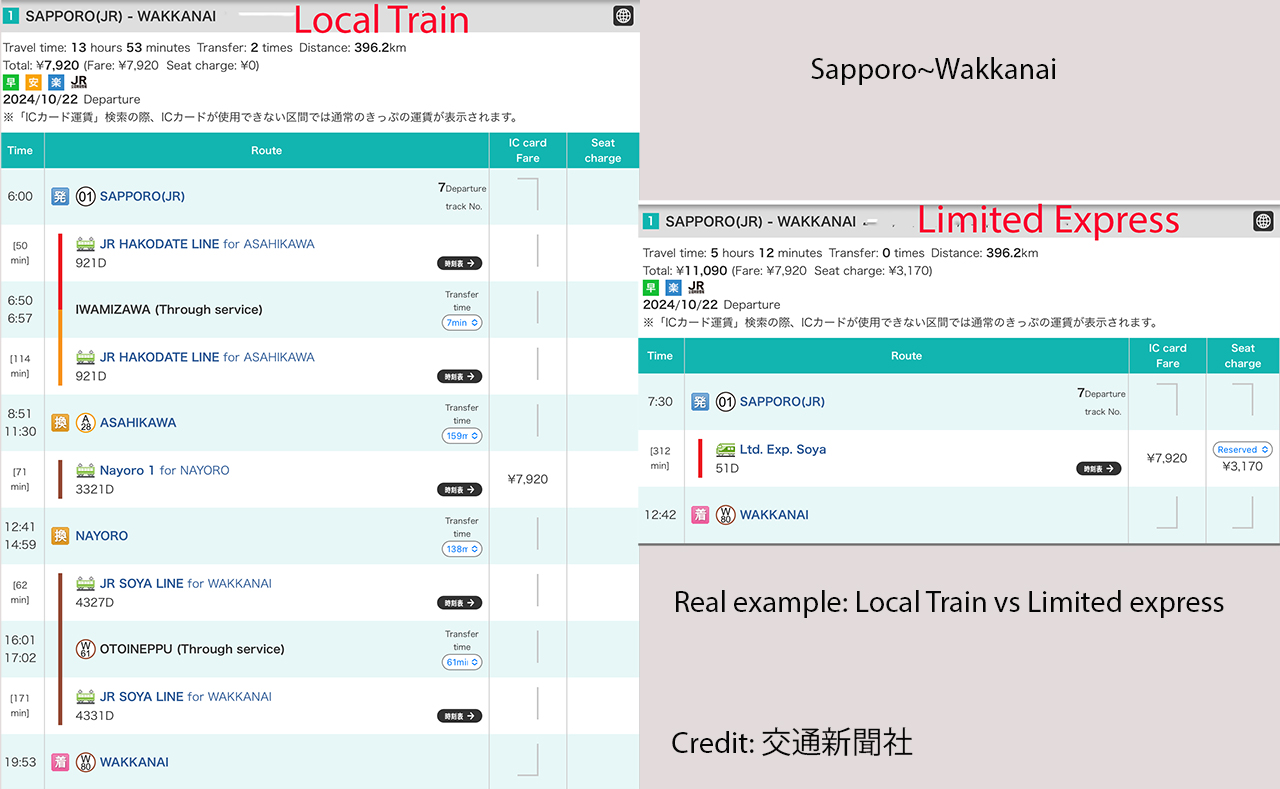

Whichever way you take, you are in for a long ride, so make sure to pick up some food, in particular look to get an Obento – packed meal).
There is quite a lot to see as you travel through the northern part of Japan, although apart from Sapporo and its outskirts and Asahikawa it is all very rural, although as you approach Toyotomi, the train line does come close to the sea line. On the TSJR trip we returned from Wakkanai on the return Limited Express Soya, which in the summer means that you have a chance to see the sunset
There are quite a few, mainly railway enthusiasts, who do this journey for the sake of the train ride, so at Wakkanai Station there are places to eat and buy snacks.
In fact the station is quite modern and a few meters back from the original station, but the end of the original line has been preserved and is a popular photo spot.
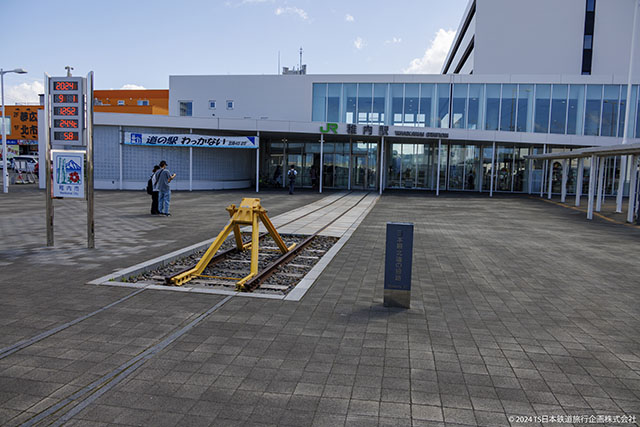

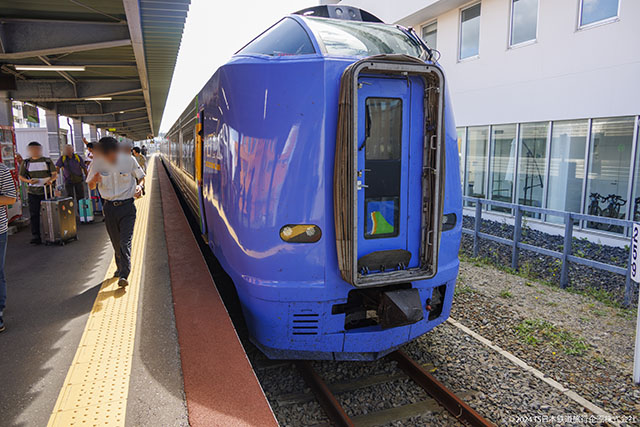

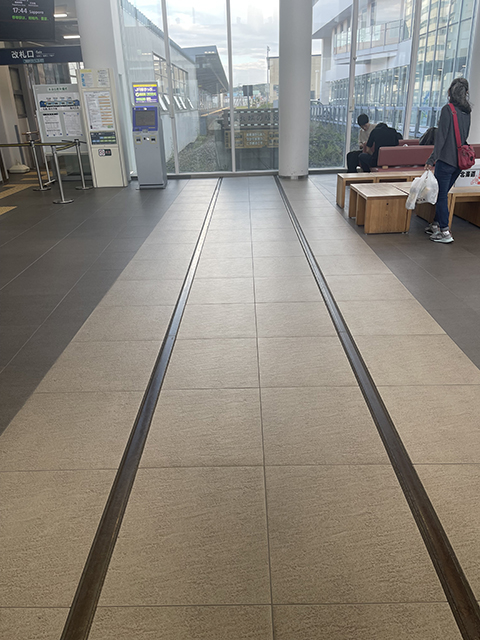

You may be interested to know that Wakkanai is closer to Russia (all be it disputed territory ) than it is to Sapporo and definitely Tokyo. You get a feel of how close by the fact that many of the road signs are in Japanese and Russian (Otaru is similar as many Russian ships used to call at Otaru Port).
Sapporo~Asahikawa
- Line: Hakodate Main Line
- Distance: 136.8km
- time taken: 1hr 30 mins by Limited Express 2 1/2hrs by local train (change at Iwamizawa)
- Train Type: JR Hokkaido suburban electric EMUs 733, 735, 731, 721 series Limited Express 781, 261 series)
- Electrification: 20KV AC
Asahikawa~Wakkanai
- Line: Soya Main Line
- Distance: 259.4 km
- time taken: 3hr 42 mins by Limited Express 7 1/2 hours by local train
- Train Type: JR Hokkaido Limited Express 261 series; Local Trains H100, KiHa40 & 54
- Electrification: none
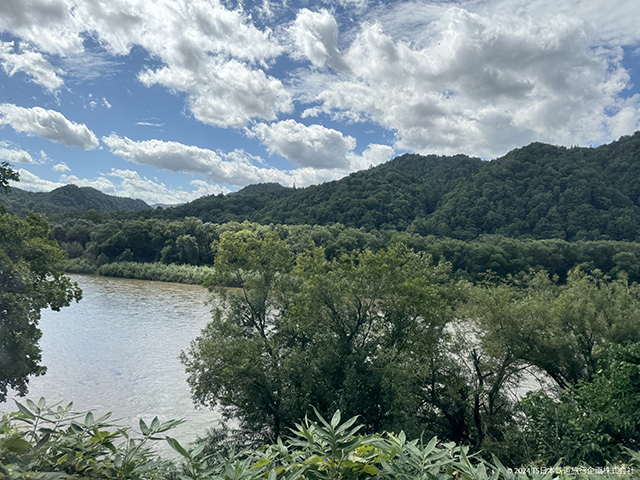

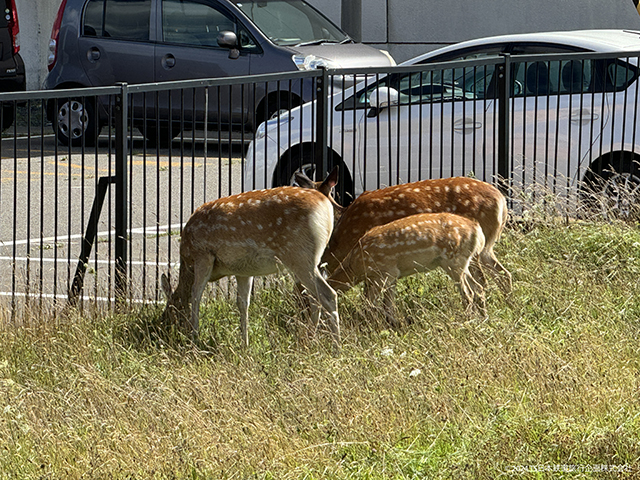

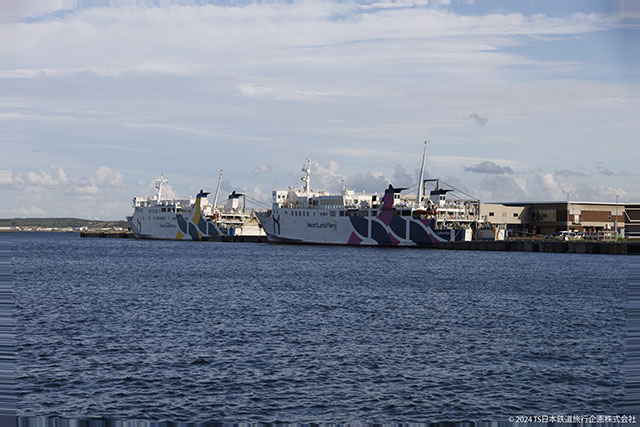

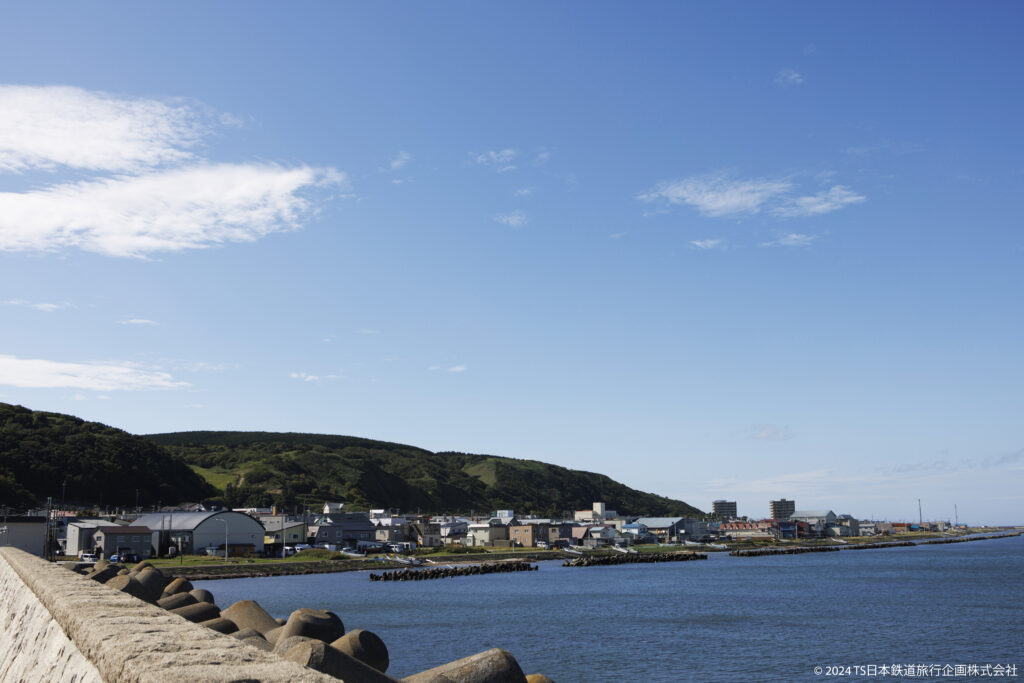

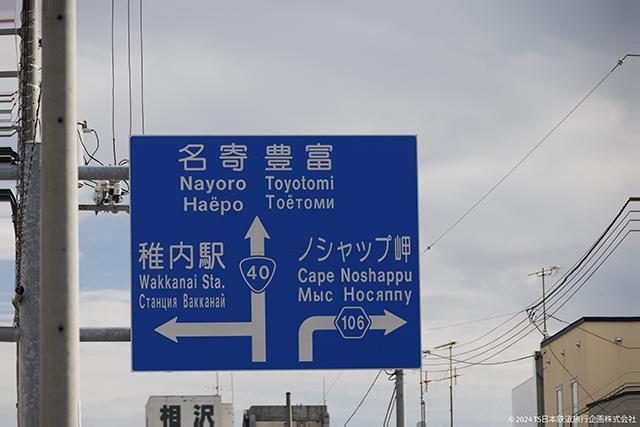

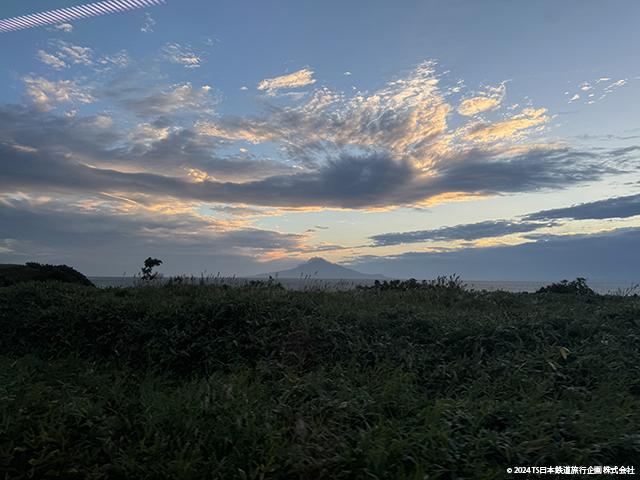

Back to Hakodate but with an interesting diversion…
We returned to Hakodate along the Soya Main Line and Hakodate Main line to Sapporo and then along the Chitose Line and Muroran Line, with a brief stop off at Muroran, but our main goal was one of the Hakodate Main Line branches, the former Sawara Line branch
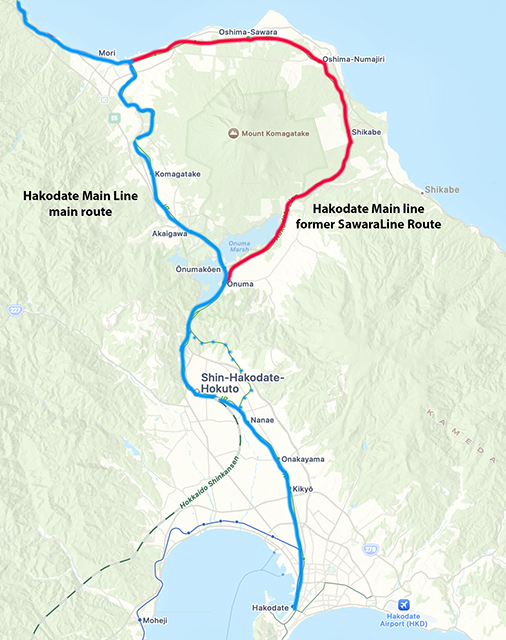

The former Sawara line branch of the Hakodate Main Line runs between Mori and Onuma, but via Oshima Sawara and Shikabe, rather than what is now the main route that runs via Onuma Loen and Komagatake. This route is 35.3km and takes about an hour to travel, compared to 22.5km and 40 minutes using the main route via Onumakoen…but it is an interesting route to travel. As the Limited Express trains travel via the main route, you need to travel on a local train, of which there are only a few during the day (7 towards Hakodate and 5 from Hakodate, with basically no trains departing Mori on Onuma after 8am to nearly 3pm).
On the TSJR tour we managed to travel on the line from Mori to Onuma and on to Hakodate later afternoon, and we are glad we did.
The main difference in the two routes is that they each go round a different side of Mt Komagatake. The Sawara branch line goes round the sea side, whilst the main route goes inland and is more direct.
(Picture is Mt Komagatake seen from the station platform at Mori)
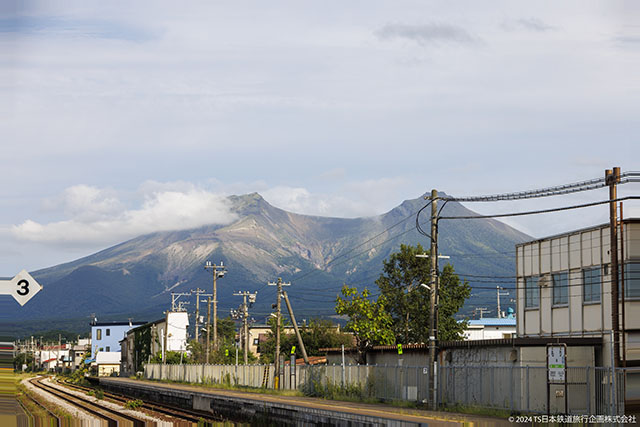

The first thing that strikes you when travelling on this line is that it is truly rural, with vegetation overhanging the line. The second thing is the station buildings, all now unstaffed, some very rudimentary (little more than huts) others a bit more substantial.
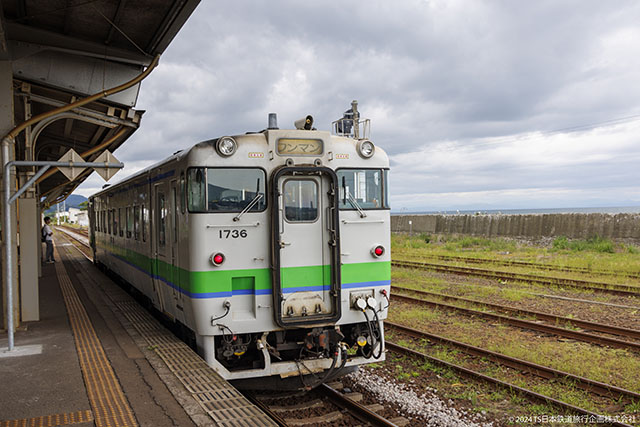

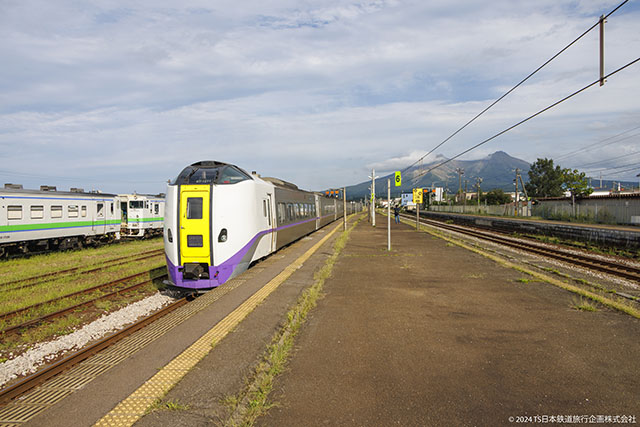

| Mori~Onuma (Hakodate Main Line) | Main Route (Via OnumaKoen) | Sawara Branch Route |
| Distance | 22.5KM | 35.3KM |
| Service type | Local, Limited Express services stop at Mori and some Onuma Koen but not Onuma(*) | Local only |
| Journey Time | 30~40 minutes | Approx 1 hour |
| Train Frequency | 6 trains a day to Mori / 7 trains a day from Mori(*) | 5 trains to Mori / 7 trains a day from Mori |
| Train types used | KiHa40 for local services. KiHa 261 series on Limited Express services | KiHa40 & 150 |
| Route Information | Non Electrified; single line with passing points | Non Electrified; single line with passing points |
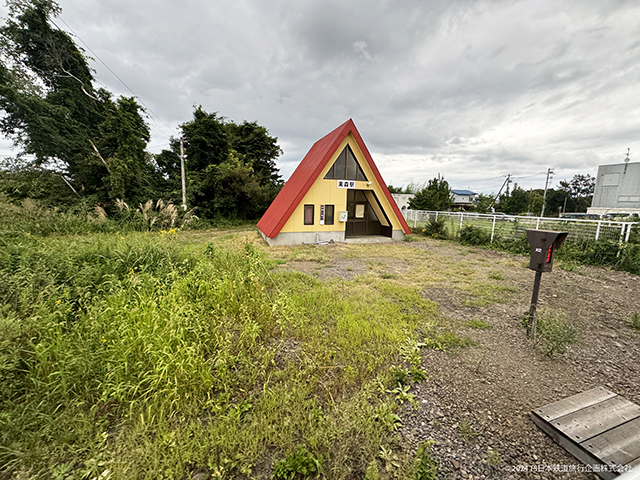

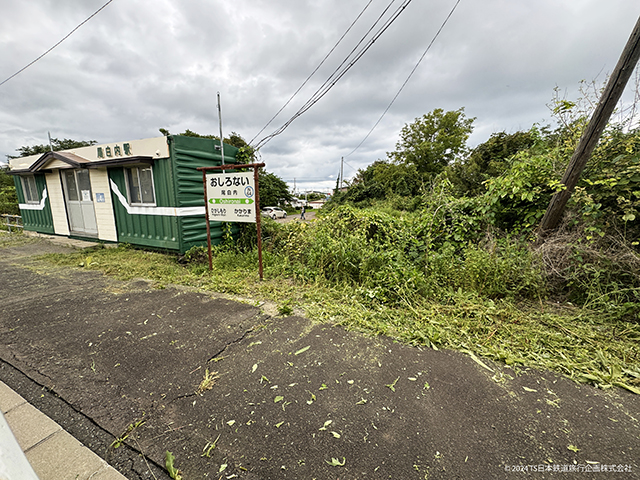

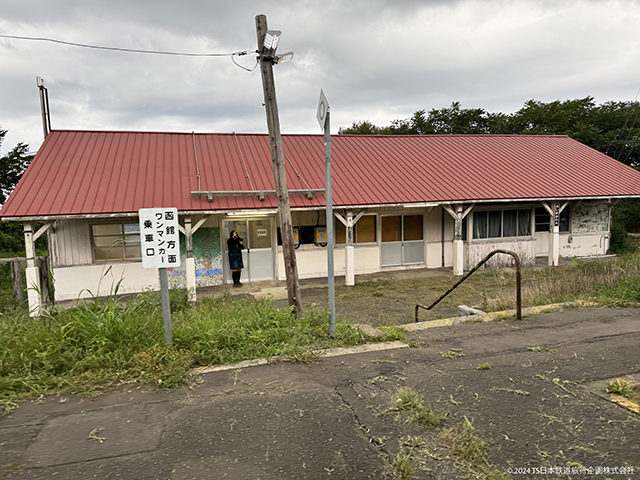

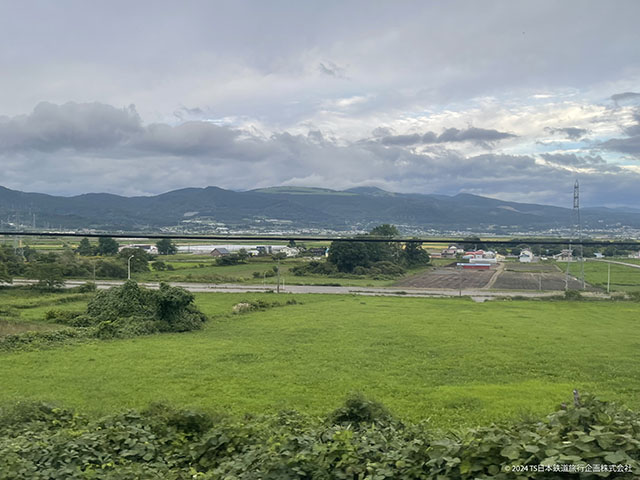

- Japan Rail Passes
Except for the South Hokkaido Railway and the trams in Hakodate and Sapporo, JR Rail Passes can be used for the routes described in this article. The JR Hokkaido Pass also covers all JR services in Hokkaido, but does not include the South Hokkaido Railway and the Hakodate and Sapporo trams.
- Other passes
Seishun 18 Kippu can also be used on JR Hokkaido local and ordinary rapid services. It should be noted gowever due to the frequency of trains and length of some journeys you may find you are travelling a lot on Limited Express trains.
- IC cards
The use of IC cards is limited:
Hakodate Tram
Sapporo Tram & Subway
JR Hokkaido Sapporo city & suburban area
Hakodate area between Hakodate and Shin Hakodate Hokuto.
(IC cards cannot be used between different IC card usable regions)
- Planning is essential
Planning your trip is essential as on many lines services may run only every few hours, even for what you may consider as short local routes.
- Tourist Information
Ideas for travelling to / from Hokkaido


Whether you want to See Japan by Rail or Explore Japan’s Railways, TS Japan Rail can help you plan your trip with ideas, designing travel itineraries, assisting with bookings and more.
We take the stress out of planning your trip and help ensure it is successful!
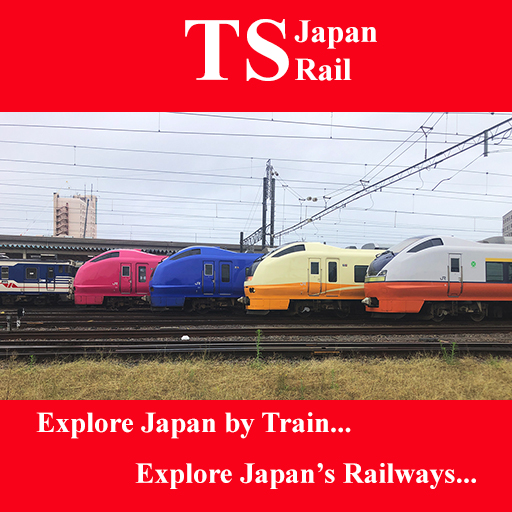

For more information on our services
see our homepage!









